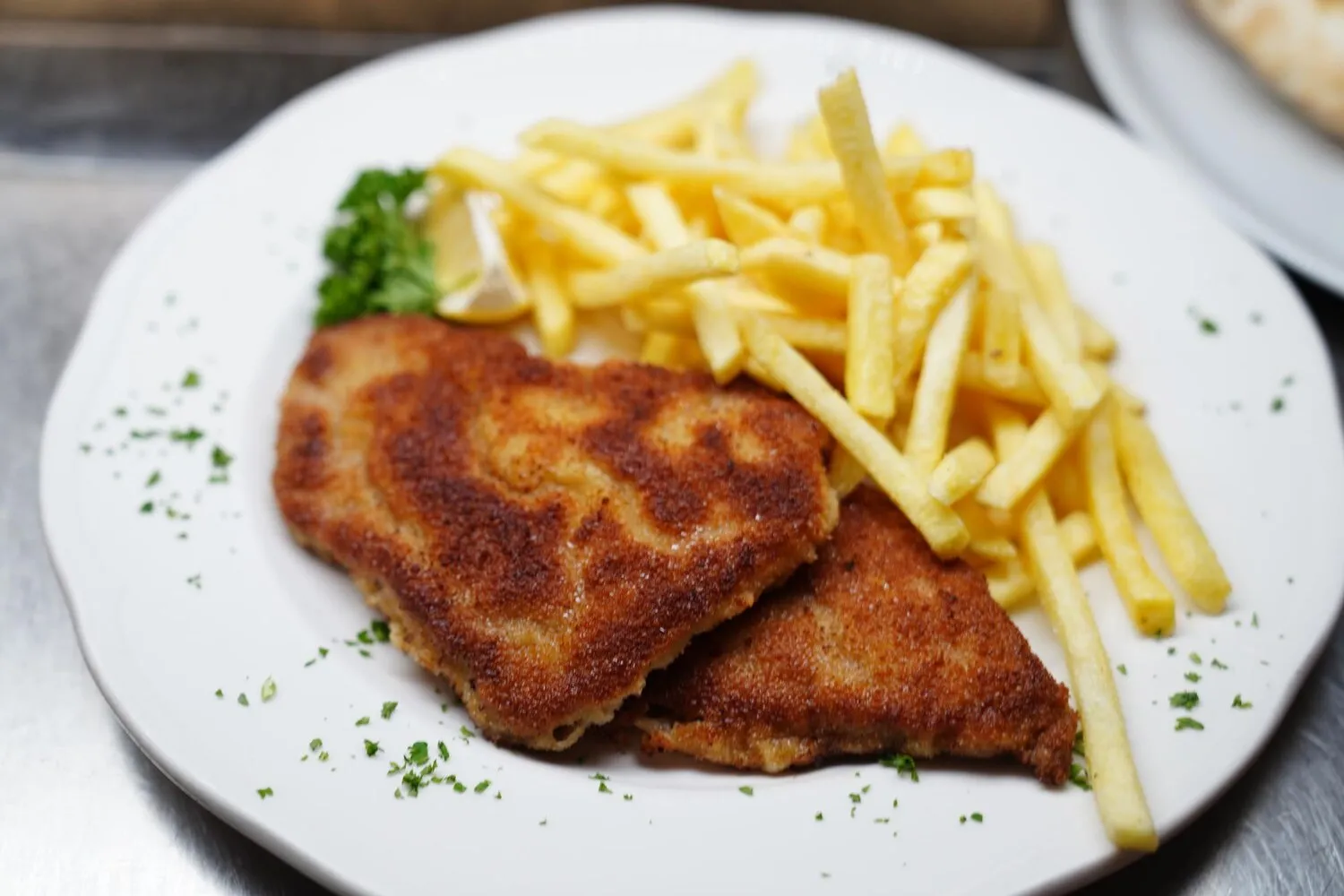
Schnitzel
Breaded and fried cutlet of meat. A common and popular menu item.
Nutrition Facts
* The % Daily Value (DV) tells you how much a nutrient in a serving of food contributes to a daily diet. 2,000 calories a day is used for general nutrition advice.
Schnitzel's origins can be traced back to the 'cotoletta alla milanese' from Italy. Legend suggests that Count Radetzky brought the recipe to Austria in the 19th century, where it was adapted and refined, evolving into the iconic Wiener Schnitzel.
Schnitzel is deeply embedded in Austrian culture and culinary tradition. It's more than just a meal; it's a symbol of Austrian hospitality and comfort food.
National Dish
Wiener Schnitzel (made with veal) is considered one of Austria's national dishes and is frequently served in restaurants and homes across the country.
Restaurant Staple
Schnitzel is a ubiquitous menu item in Austrian restaurants, ranging from traditional 'Beisln' (taverns) to upscale establishments.
Family Tradition
Making Schnitzel is often a family tradition, with recipes passed down through generations. The preparation process, from pounding the meat to achieving the perfect golden-brown crust, is a point of pride.
Schnitzel offers a delightful combination of savory meat, crispy breading, and a hint of lemon. It's a relatively simple dish where the quality of the ingredients shines through.
The primary flavors are those of the meat, usually veal, pork, or chicken. The breadcrumb coating provides a satisfying crunch and a slightly buttery taste if fried properly. A squeeze of lemon juice brightens the dish and cuts through the richness, adding a tangy zest. Salt and pepper season the meat and breadcrumbs, enhancing the overall savory experience.
Meat Preparation
Pound the meat to an even thickness (about 1/4 inch) to ensure even cooking and tenderness. Use a meat mallet and pound gently to avoid tearing the meat.
Breading Technique
Follow the standard breading procedure: flour, egg wash, and breadcrumbs. Make sure each layer adheres properly to the meat. Use finely ground breadcrumbs for a delicate, even crust. Press the breadcrumbs firmly onto the meat.
Frying Temperature
Use clarified butter or a high-smoke-point oil for frying. The oil temperature should be around 325-350°F (160-175°C). Don't overcrowd the pan, as this will lower the oil temperature and result in soggy Schnitzel.
Serving Suggestions
Serve Schnitzel immediately after frying for the best texture. Traditionally, it's served with a slice of lemon and parsley. Common side dishes include potatoes (boiled, fried, or mashed), salad, and cranberries.
Explore additional Classic Swedish dishes and restaurants
Explore Classic SwedishDiscover top dining spots and culinary experiences in Västerås.
Explore VästeråsLearn more about the food culture, restaurant scene, and culinary heritage of Sweden.
Explore Sweden